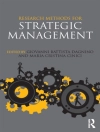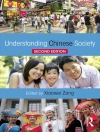The amount of data produced, captured and transmitted through the media has never been greater. But for this data to be useful, it needs to be properly understood and claims made about or with data need to be properly scrutinized.
Through a series of examples of statistics in the media, this book shows you how to critically assess the presentation of data in the media, to identify what is significant and to sort verifiable conclusions from misleading claims. How accurate are polls, and how should we know? How should league tables be read? Are numbers presented as ‘large’ really as big as they may seem at first glance?
By answering these questions and more, readers will learn a number of statistical concepts central to many undergraduate social science statistics courses. By tying them in to real life examples, the importance and relevance of these concepts comes to life. As such, this book does more than teaches techniques needed for a statistics course; it teaches you life skills that we need to use every single day.
สารบัญ
Chapter 1 Introduction
Chapter 2 How to make numbers sound big, or small, even when they aren’t: “Is that a lot?”
Chapter 3 Recognizing which numbers you should trust: “Where is the data from?”
Chapter 4 Making surveys representative: “Who you gonna call?”
Chapter 5 Graphics in the media and how to read them: “What does this mean?
Chapter 6 Maps in the media: “Where is this happening?’
Chapter 7 Mapping patterns and people: why does geography matter?
Chapter 8 Understanding uncertainty in estimation: “are you sure?”
Chapter 9 Ranking with league tables: “What′s the best?’
Chapter 10 When a relationship (doesn’t) mean causality: “How did that happen?’
Chapter 11 Surprising quirks in the media: “Is that possible?’
Chapter 12 Conclusion
เกี่ยวกับผู้แต่ง
Mark Taylor is Senior Lecturer in Quantitative Methods (Sociology) at the Sheffield Methods Institute, University of Sheffield, and is AHRC Leadership Fellow (Creative Economy) until 2021. His research interests are in the sociology of culture: in consumption, production, and education, and its relationship to inequality. He spends a lot of time visualising data, and wrangling data into a shape where it can be visualised. His twitter is @markrt












